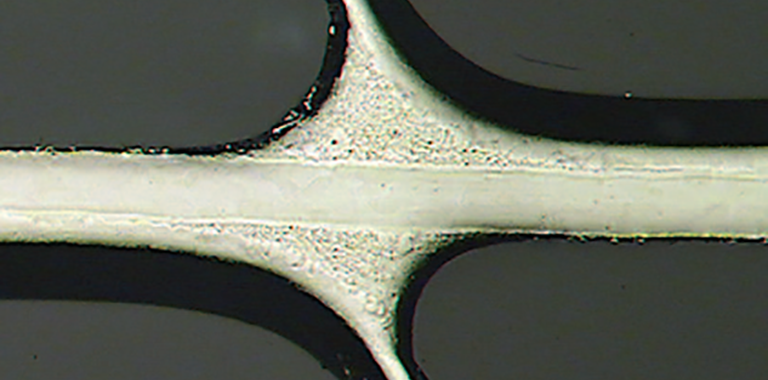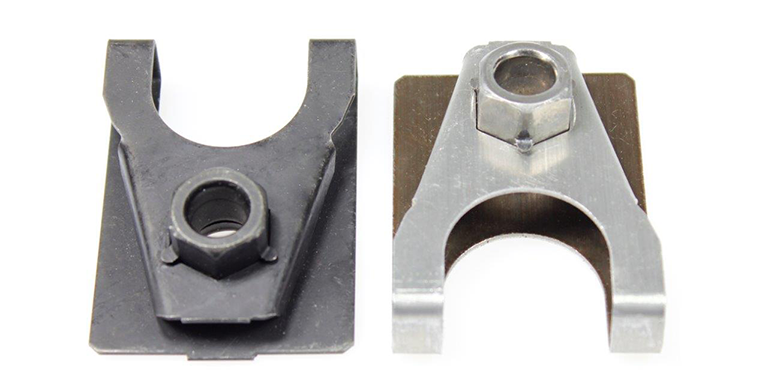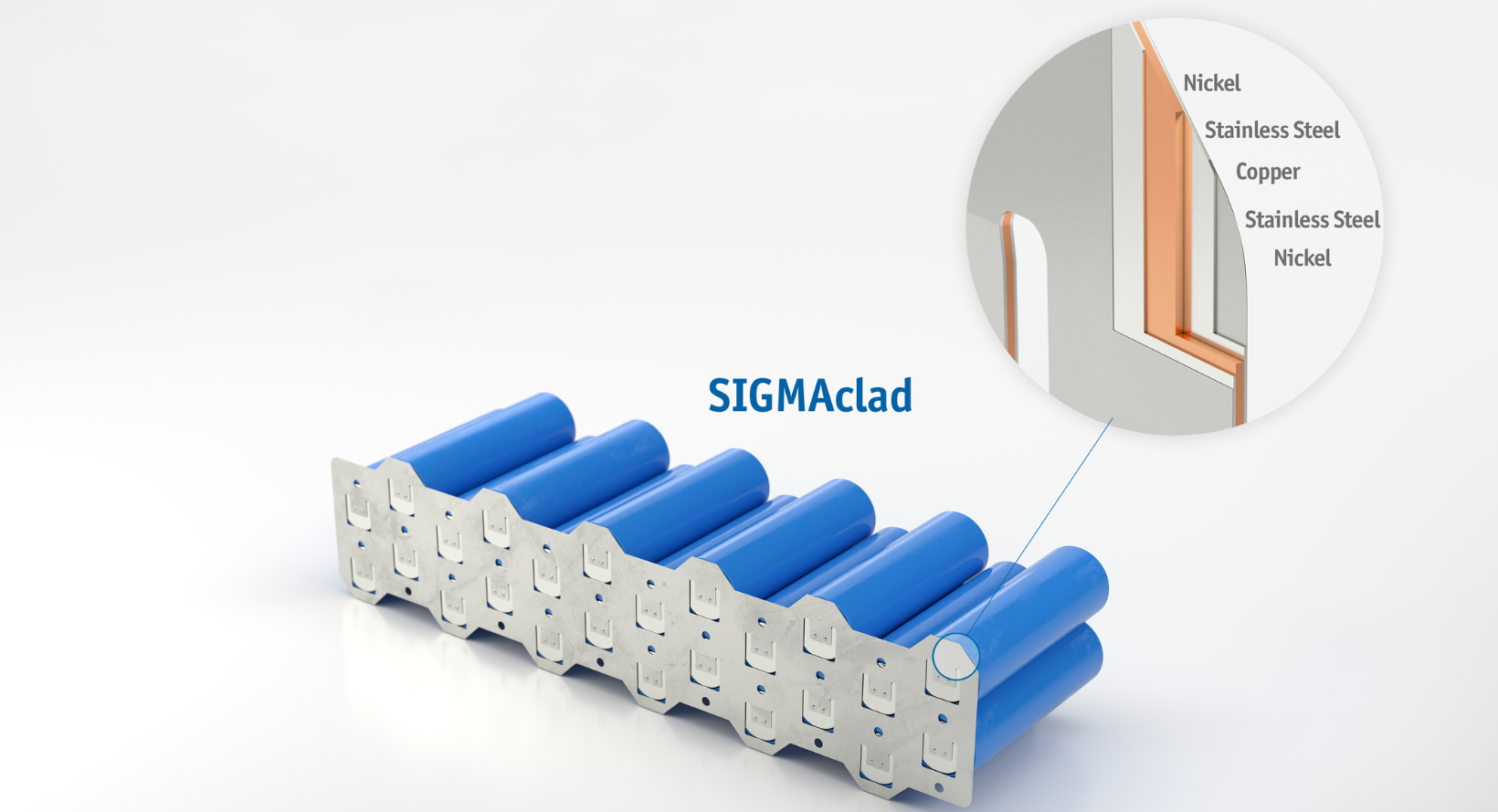Overlay Clad Materials
Advantages of Overlay Clad
Overlay cladding creates products with multiple performance advantages. Many applications require material properties that cannot be found in a mono-metal. Cladding of multiple metals together into one laminated strip can provide the desired properties unique to a specific application. Clad metals often use one material on the surface (for corrosion resistance, weldability or other benefits) and a different material in the core to create other properties. Examples include light weight with corrosion resistant surfaces or high thermal conductivity with good welding properties. Overlay cladding allows material designers the freedom to create clads with a wide range of properties not found in mono-metals.
Button Cell Battery Materials
An important application for clad materials is in the button cell battery industry for use as both the anode lid and cathode cup. In each case, clad is the preferred choice because of its unique multi-layer properties especially as performance demands increase for higher energy, smaller cells for hearing aids and other electronic devices.
Tri-clad Cu/S304/Ni functions as the anode current collector with its corrosion resistant nickel exterior, strong stainless core and pure copper interior for cell chemistry compatibility with mercury free applications.
For the cell cup or cathode, Ni/S430/Ni excels over plated options because of the durability of the clad nickel layer compared to more porous plated solutions. This is especially important to prevent corrosion in hearing aide applications.
EMS offers gauges as low as 0.004” and widths up to 12” in both standard and special clad ratios. As cells become thinner, clad materials made through special rolled tempers provide deep drawability and strength.


Cookware Materials
One of the most well known applications for multi-layer clad metals is for home and commercial cookware. Combining the corrosion, formability and food compatibility properties of stainless on both exterior surfaces with a center layer of aluminum or copper for quick and even heating produces an optimum cooking vessel.
EMS added Stainless Steel / Aluminum / Stainless Steel products to its cookware portfolio in 2012 by installing continuous, warm bonding to its traditional cold bonding capability. EMS can clad numerous layers such as 3 or 5 layer aluminum clad or single ply copper cores with Austenitic Stainless and induction ready Ferritic Stainlesses.
EMS can easily vary the thickness ratio of each layer and combine different metals to produce either a unique material or one of the more conventional clads available today. 2 layer clads such as Stainless Steel / Aluminum are also used for special applications like iron Soleplates. For Stainless Steel / Aluminum / Stainless Steel combinations, thicknesses are 0.070” – 0.160” and widths up to 24”. EMS can provide coil, sheet or even discs all in a deep drawable temper ready for forming. 2 layer Stainless Steel / Aluminum clad systems can be produced in a wider range of thickenesses 0.013” – 0.200” with a number 8, polished surface.
In addition, EMS can produce a Copper / Stainless Steel system which offers the simplicity of a 2 layer system with an aesthetically pleasing Copper exterior. Typical thickness is 0.060” – 0.090”.
Clad Stainless for Self-Brazing Applications
Decades of design experience have proven clads give lower assembly costs and higher manufacturing yields compared to using thin braze foils or paste. Applications include oil coolers, transmission coolers, and charge air coolers for off-road equipment, HDD trucks and passenger cars. Industrial heat exchangers also benefit from self brazing clads.
Clad offers forming flexibility, tight fitting components, reduced braze filler usage and because of the copper and stainless metallurgical bond, superior braze quality.
Self braze clads combine a braze grade copper layer such as C102 or C122 on one or both sides of a core of Ferritic or Austenitic stainless. Many copper ratios are available with 5—10% of total thickness being most common. Carbon steel core material is also an option for simplifying the internal turbulator processing in some heat exchanger designs.
Thicknesses available range from 0.010” – 0.120” and widths up to 25”. Material is normally provided fully annealed for maximum formability.
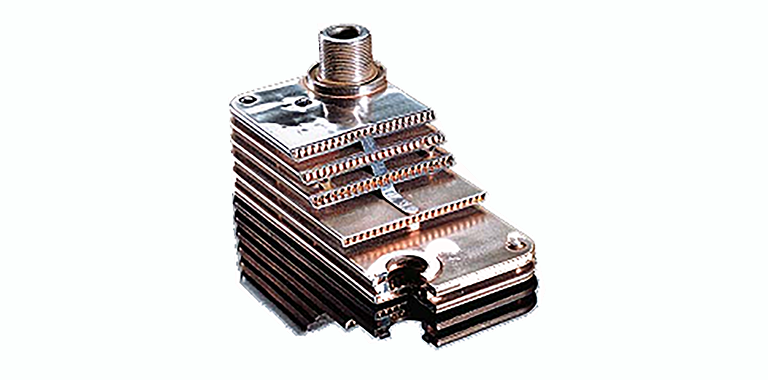
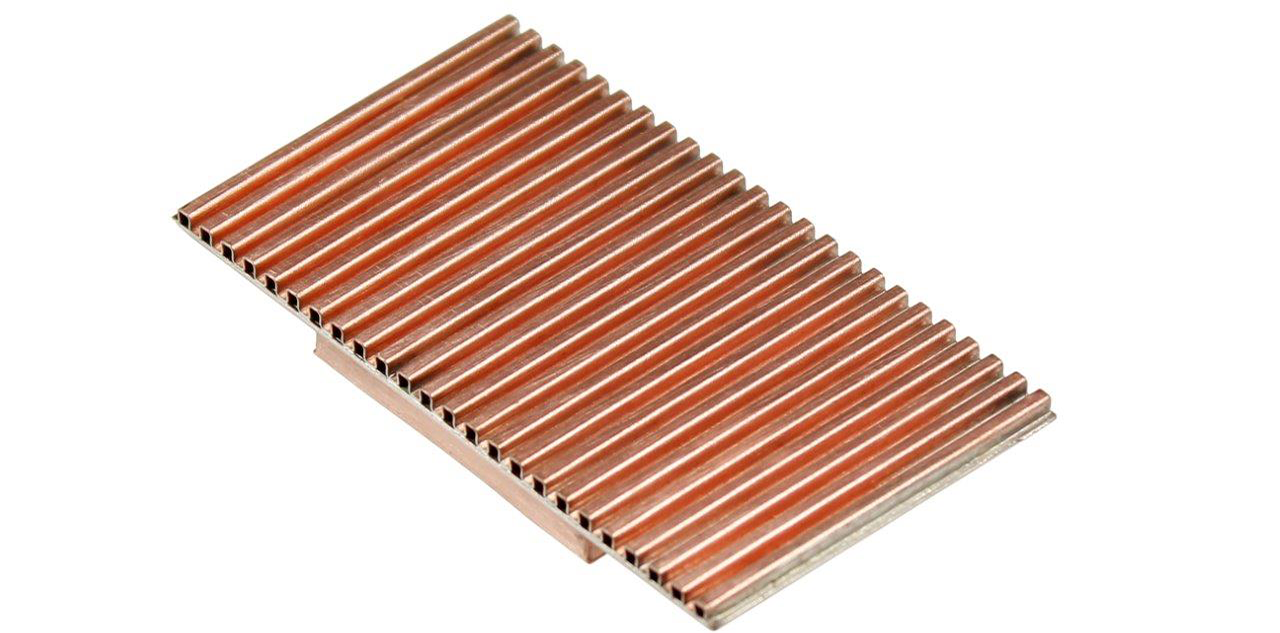
Copper / Invar / Copper
Copper / Invar / Copper composites are used in printed circuit boards, hybrid enclosures, heat sinks and other applications where coefficient of thermal expansion (CTE) match or constraint of thermal expansion is required. The copper layer provides high thermal and electrical conductivity while the Invar core lowers the overall expansion during thermal cycling. By adjusting the copper to Invar ratio, the CTE can be tailored to the specific electronic device attached to the board, reducing solder connection fatigue and failure.
EMS produces two standard ratios: 12.5/75/12.5 and 20/60/20 in gauges from 0.006” – 0.062” and widths up to 24.5”. Standard temper is fully annealed allowing drilling, shearing and forming as needed for PWB assembly. Material is available in coil or sheet.
Copper Replacement Materials
Clad materials are often used to replace copper or copper alloys for both cost and performance reasons. Markets where clad designs are providing benefits today include electrical equipment, home & appliance and architectural.
For electrical components, EMS supplies a variety of copper clad carbon steel designs that replace solid copper, expensive copper alloys such as C638, C654, C7025, C7035 and BeCu alloys. Known as Conflex, this 3 layer system consisting of C102/G1065/C102 is used as fuse clips, electrical contact blades, carrier strips, switch components, sliding contact fingers, pressure diaphragms, grounding strips, terminal strips and many other applications requiring structural strength combined with electrical and thermal conductivity.
Standard ratios are 5/90/5 – Conflex 316 (16% IACS) and 10/80/10 – Conflex 326 (26% IACS). Both are rated for 150 C operating temperatures. As rolled yield strengths can be as high as 130 Ksi and 140 Ksi respectively. If followed by heat treatment, yield strengths increase to 200 and 220 Ksi.
Gauges offered are 0.003” – 0.060” and widths up to 20”.
For electrical distribution and heat sinks, copper clad aluminum reduces weight, increases joining options and reduces cost. Applications include terminating aluminum conductors where the Al side of the clad contacts the aluminum cable and the Cu contacts the copper terminal of the switchgear. Another popular use is for IGBTs and other electronic heat sinks which need the joinability of Cu and a lighter, thermally conductive Al.
2 or 3 layer systems in any combination of Cu and Al such as Cu/Al/Cu, Al/Cu/Al, and Cu/Al are possible with 10/80/10 and 15/85 ratios standard. A variety of work hardenable copper and aluminum alloys are used and tempers are possible – annealed for forming up to as rolled for maximum hardness and rigidity.
EMS also is unique in its ability to offer the copper clad aluminum system in a wide gauge range of 0.001” up to 0.250″ and widths up to 25″.
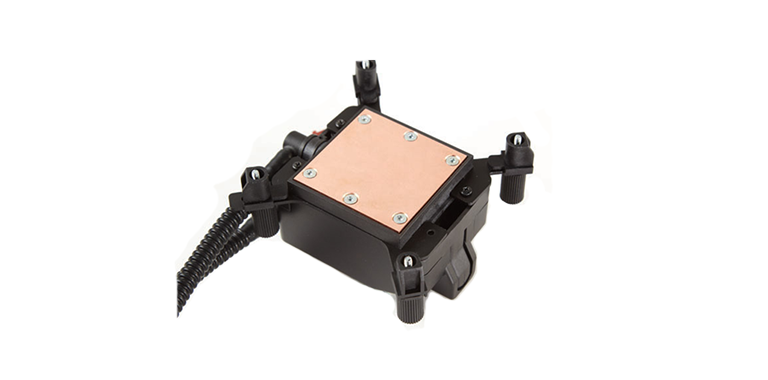

Li-Ion Battery Solutions
Joining lithium cells whether cylindrical, pouch or prismatic demands innovative technologies. EMS offers a variety of solutions that include:
- EMS SIGMACLAD® – Nickel /Stainless Steel /Copper /Stainless Steel /Nickel – tab material suitable to replace nickel or copper alloys joining cell to cell or acting as a bus sheet connecting multiple cells in higher power applications. Clad optimizes key properties such as weldability, solderabililty, formability and thermal performance.
- Copper /Nickel tabs improve joining of the copper anode to the negative terminal of the can. Nickel / Copper /Nickel also provides thermal benefits in higher power applications.
- Various inlaid metals such as Copper, Aluminum, or Stainless can be bonded as a stripe on a variety of base metals. Inlay Clad Metal is a preferred choice for demanding applications such as Automotive Hybrid Electronics, Power Conversion and Energy Storage.
- EMS CoreLok® is an edge bonded Copper /Aluminum product for joining pouch cell terminals made from Copper and Aluminum.
Nickel Replacement Materials
Clad materials are often used to replace nickel or nickel alloys for both cost and performance reasons. Nickel substitute clads are targeting opportunities in the lithium battery industry for both connector tabs and joining plates for multi-cell packs.
Designated SIGMACLAD®, EMS’ 5 layer Ni/S304/C102/S304/Ni system offers an optimum combination of conductivity, solderability, strength, formability, weldability, and corrosion resistance. Improved thermal conductivity is especially important today as the number of individual 18650 cells in a pack increases heat generation, particularly at the bus bar which reduces efficiency of cells and poses a risk of overheating.
SIGMACLAD® is available in three ratios corresponding to 30%, 40% and 60% IACS depending on electrical and thermal requirements.
Dimensions include gauges from 0.004” – 0.024”; widths 0.100” – 12.000”. Normally the product is used in the annealed condition due to demanding forming requirements, however, as rolled tempers are also available.
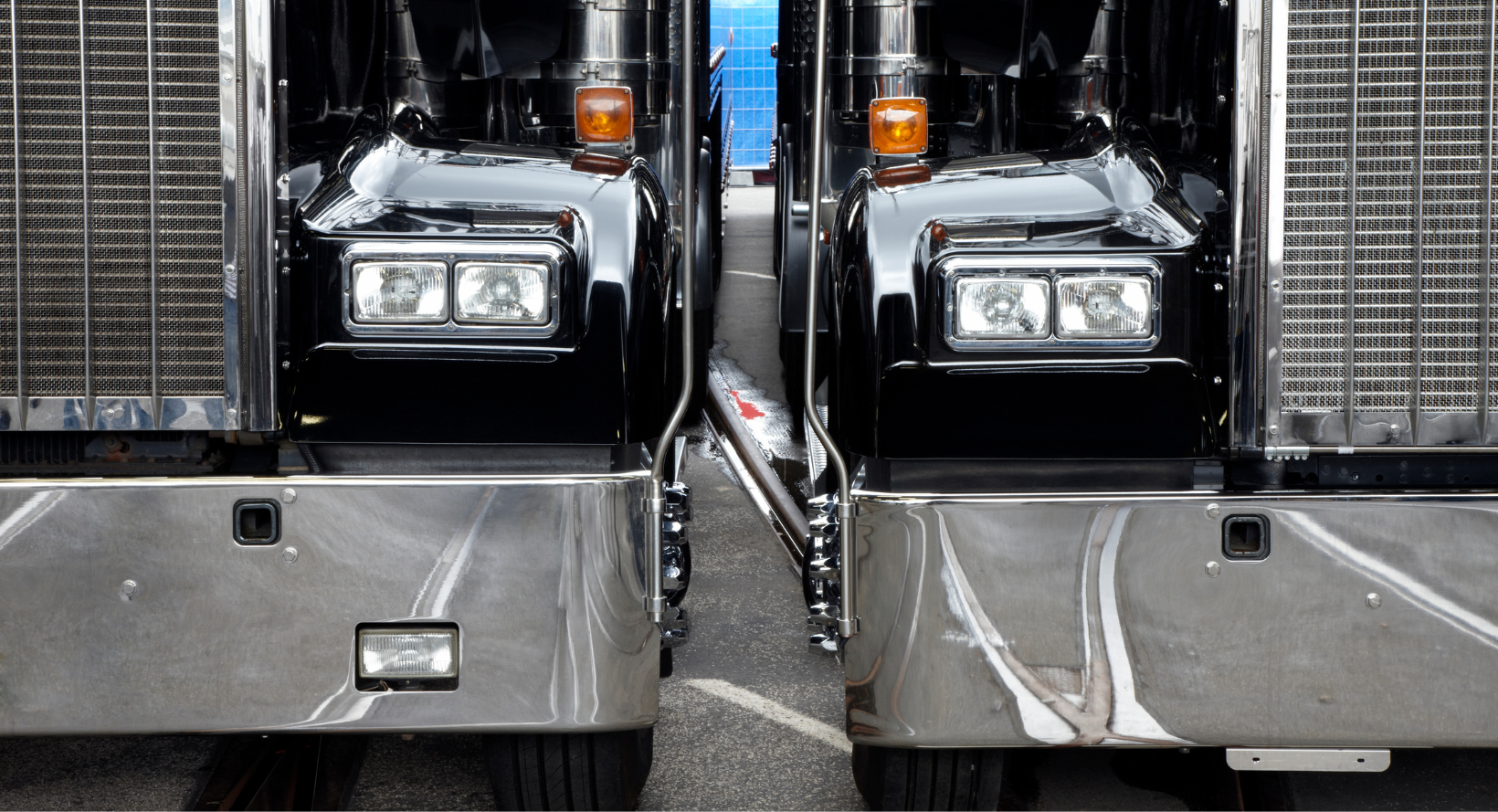
Stainless / Aluminum Bumper
Stainless Clad Aluminum has a proven track record of over 30 years in the class 8 truck industry as a bright, durable, and light weight bumper material.
This material combines a corrosion resistant S301 Austenitic Stainless with a A3003 Aluminum to produce a formable but tough composite. Typical stainless thickness ratios are 25 and 32%, balance Aluminum which result in a 50% weight savings over Chrome or painted Steel. Dimensions include gauges up to 0.200” and widths up to 26”. Highly reflective and polished, EMS produces both coil and sheet.
Titanium Brazing Filler
The EMS family of titanium based brazing foils has been developed to address the technical challenges of brazing titanium and titanium alloys. Brazing applications include jet engine exhaust, aerospace and industrial heat exchangers. Brazing filler in foil form provides more consistent joint quality than braze powder which is prone to particle size variation. Additionally, no binder is required (binder variability can cause uneven powder deposition).
EMS clad is produced by the cladding process and supplied in thin gauge foils in minimum thicknesses of 0.0012” – 0.004” and widths up to 6”. These clad brazing foils consist of layers of constituent metals which alloy in situ during the brazing process. After brazing, braze joints are homogeneous with no indication of the multi-layered foil precursor.
